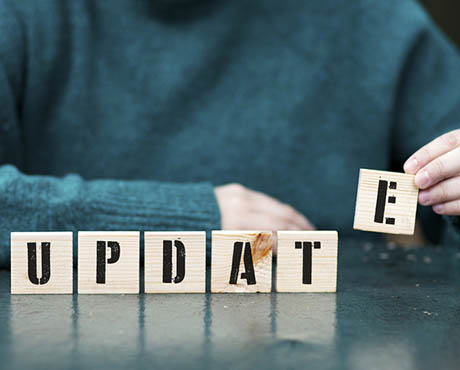
Have you visited Viva Engage yet?
News 16 DecemberViva Engage is here. Access it easily via Microsoft Teams.
18 March 2020
Share
Cyber criminals are making the most of the COVID-19 pandemic by creating phishing schemes and fake websites that mimic legitimate sources of information about the virus. These malicious emails and websites can download malware (malicious software) to your computer, and trick you into revealing your personal details.
Here are two of the main schemes currently in operation, but there are many others and more are likely to arise as the situation continues.

World Health Organization phishing email
The World Health Organization (WHO) is a trusted source of information about the COVID-19 virus but cyber criminals have created a phishing email to steal user details and download malicious software. It is particularly difficult to identify as it utilises the real World Health Organization website to fool users into sharing their details.
Here’s how it works:
 This is just one example of a phishing email from a health organisation but there are many others.
This is just one example of a phishing email from a health organisation but there are many others.
What can you do?
To protect yourself against schemes like this:
John Hopkins University Mirror Website
The John Hopkins University Coronavirus map is a legitimate source of information on virus-spread throughout the world.
Cyber criminals are using information from this website to prompt users to download a piece of software to generate the map. As the map does not require any software to be downloaded, this is a prompt to download a piece of malware.
What can you do?
You can stay up-to-date on this and other Cyber Security news by joining the Cyber Security Workplace group and the Cyber Security SharePoint where our cyber-experts post frequently about industry news and advice.


Viva Engage is here. Access it easily via Microsoft Teams.

A message from Interim Executive Dean, Faculty of Education and Arts, Professor Phil Parker

The library is supporting the ACU Historical Children’s Book Collections 2025 Fellowship. It is an opportunity to conduct research on our historical collection of children’s books, located at St Patri...

A new Adjunct and Honorary Titles Policy and Procedure has been approved and is now in effect at ACU.

Advance your career in teaching and learning with the Graduate Certificate in Higher Education. Enrol by 22 June to get started in Professional Term 5.

Include an additional survey item in the Student Evaluation of Learning and Teaching (SELT) survey for units that are offered in ACU Online Term 2 (202536).

On 24 June ACU will transition to the new EBSCOhost. This will result in a new look and feel across some of our most popular databases. Learn more about the changes and what action may be required of ...

Teaching staff are encouraged to check their units have been correctly linked to their names for the Student Evaluation of Learning and Teaching (SELT) surveys in upcoming teaching periods.

Please be aware of the following changes to payroll processing dates.

ACU has three student modules: the Academic Integrity, Respectful Relationships, and Protecting our Children modules. Semester 1 students must complete their modules by 1 July to access their results ...

As part of Student Administration's commitment to service excellence, AskACU will be running on-campus re-enrolment drop-in sessions in July, while CMAS enhancements will improve information available...

The Student News and Events bulletin is sent to all students, nationally, and includes a broad cross-section of news, announcements, events and stories from across the university. The May edition is o...

A message from the Chief Operating Officer Patrick Woods.

Register for these 15-minute sessions to learn more about the variety of online researcher profile platforms and what is involved in setting up, linking and updating your profile.

Lecturers-in-charge can make a direct determination of Poor Academic Practice (PAP) for students who engage in minor forms of academic misconduct. Learn why they can be valuable to staff and students.

A reminder to all academic staff that the mandatory Notice of Intent, for those intending to apply for promotion in the 2025 round, must be submitted by 11.59pm this Friday (30 May).

ACU is developing a new Education and Student Success Plan to ensure our university continues to provide a high-quality, student-centred learning experience. Find out how you can contribute to the pla...

Expect a few email notifications as we prepare to welcome you to Viva Engage next week.

Include an additional survey item in the Student Evaluation of Learning and Teaching (SELT) survey for units that are offered in Professional Term 4 (202547).

An update from the Executive Dean of Law and Business Professor Andrew O'Neil.
Visit Service Central to access Corporate Services.